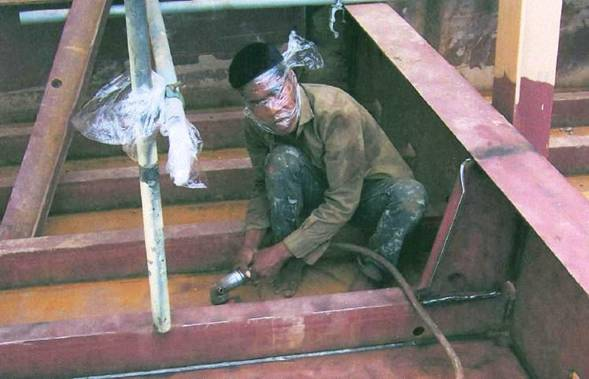
Anyone think that the plastic sheet wrapped around this worker’s head is adequate respiratory protection’

This worker clearly recognizes that the grinding work he’s doing exposes him to respiratory hazards. Presumably, his employer didn’t provide him with a proper respirator. Otherwise, why in the world would he wrap his head in plastic’and risk suffocation’to protect himself from inhaling particles as he grinds’
9 Key Elements of a Respiratory Protection Program
Under the OHS laws, if you can’t eliminate respiratory hazards, such as dusts, gases, fumes, low levels of oxygen, etc., through engineering controls, you must protect workers from those hazards through the use of appropriate PPE, which doesn’t include plastic wrap.
The best way to ensure compliance with the respiratory protection requirements is through a respiratory protection program that covers these key areas:
- Responsibilities of employers, supervisors, workers and the program administrator;
- Respiratory hazard assessment procedures;
- Selection of appropriate respiratory protection (For example, use this respiratory protection selection form to choose the right respirator and document how you made that choice.);
- Assessments of workers’ health because some conditions may impact safe use of respirators (For example, have all workers complete a Health Screening Questionnaire before they perform work requiring the use of respiratory protection.);
- Fit testing (Use this form to document the results of workers’ fit tests.);
- Proper use of respiratory protection (Here’s a form workers can use to inspect a respirator before they use it for any defects or issues that could make it ineffective.);
- Cleaning and maintenance of respiratory protection (Workers can use this checklist to ensure that they properly care for their respirators.);
- Training; and
- Recordkeeping requirements.
